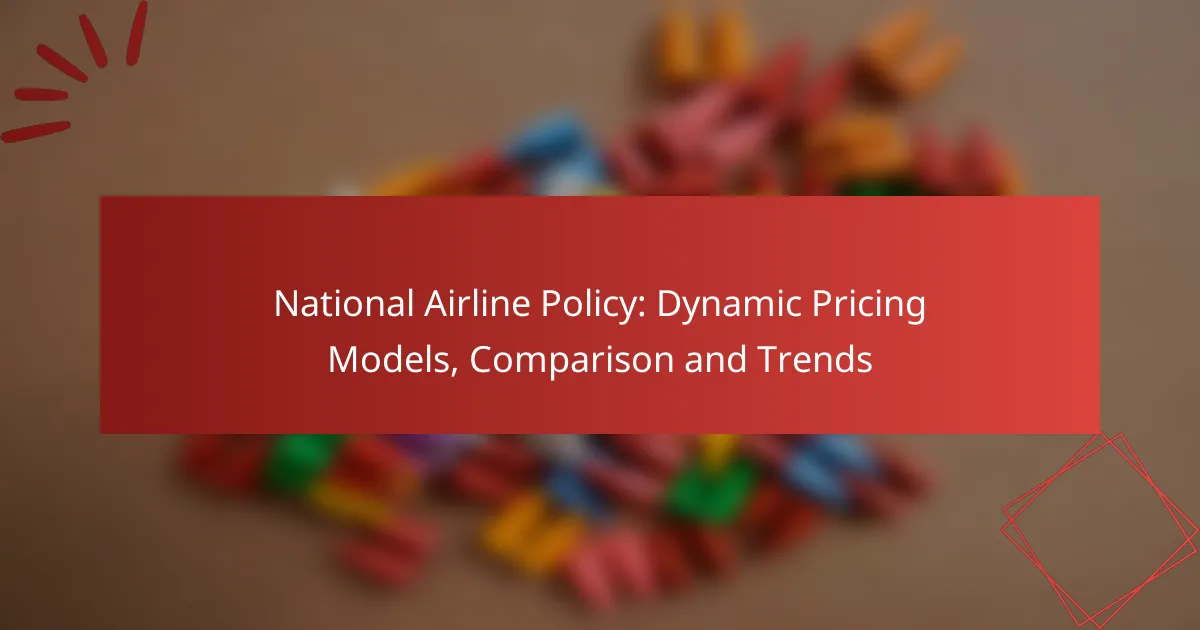The national airline industry is undergoing a transformation as dynamic pricing models become integral to fare-setting strategies. By adjusting ticket prices based on factors like demand, competition, and timing, airlines aim to optimize revenue and enhance customer satisfaction. This evolving landscape reflects broader trends in technology and consumer behavior, significantly impacting how airlines manage pricing and inventory.
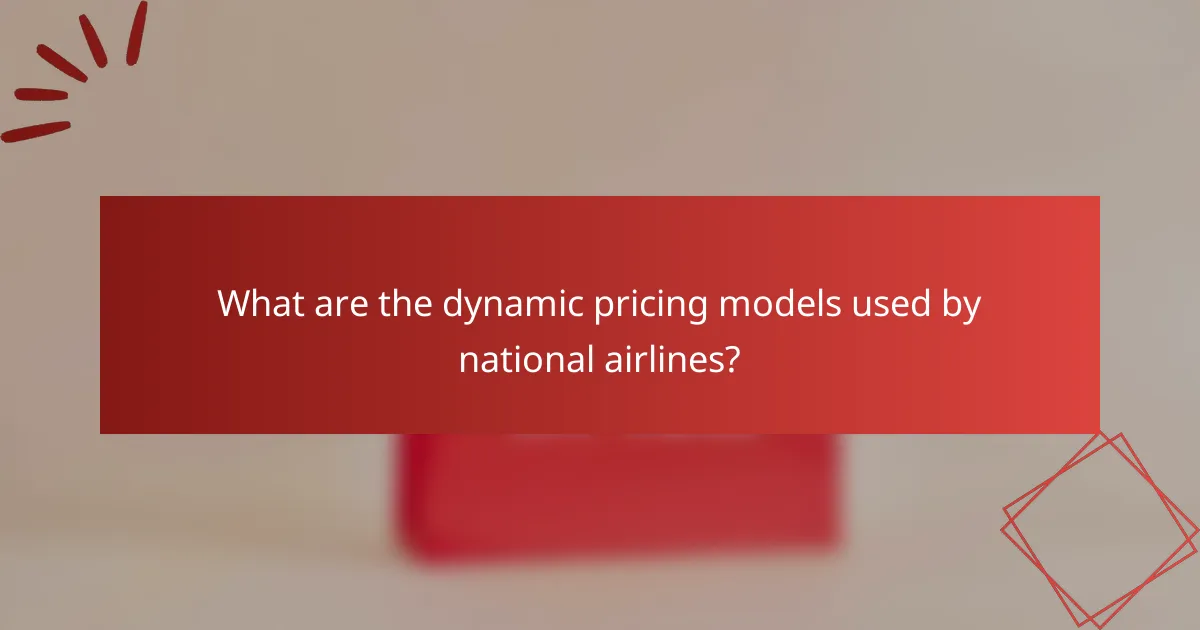
What are the dynamic pricing models used by national airlines?
Dynamic pricing models used by national airlines adjust ticket prices based on various factors such as demand, competition, and time. These models aim to maximize revenue by responding to real-time market conditions and customer behavior.
Revenue management pricing
Revenue management pricing involves analyzing consumer behavior and demand patterns to set optimal prices for airline tickets. Airlines use historical data and predictive analytics to forecast demand and adjust prices accordingly, often leading to higher profits during peak travel seasons.
For example, an airline may increase prices for a flight as seats fill up, capitalizing on the urgency of last-minute travelers. It’s crucial for airlines to balance price increases with customer satisfaction to avoid losing potential sales.
Competitive pricing strategies
Competitive pricing strategies focus on setting fares based on the pricing of rival airlines. This approach requires constant monitoring of competitors’ prices and adjusting one’s own fares to remain attractive to consumers.
Airlines may employ tools that automatically adjust prices in response to competitors’ changes, ensuring they remain competitive without sacrificing profitability. However, this can lead to price wars, which may erode overall industry margins.
Time-based pricing
Time-based pricing adjusts ticket prices according to the time remaining before departure. Generally, prices are lower when tickets are first released and gradually increase as the departure date approaches.
This model encourages early bookings while allowing airlines to capture higher prices from late bookers. Travelers should consider booking well in advance to secure the best rates, as last-minute fares can be significantly higher.
Dynamic fare adjustments
Dynamic fare adjustments refer to real-time changes in ticket prices based on fluctuations in demand, market conditions, and even external factors like weather or events. Airlines utilize sophisticated algorithms to implement these adjustments swiftly.
For instance, if a major event occurs in a destination city, airlines may increase fares for flights to that location. Customers should be aware that prices can change frequently, making it beneficial to monitor fares and book when they see favorable rates.
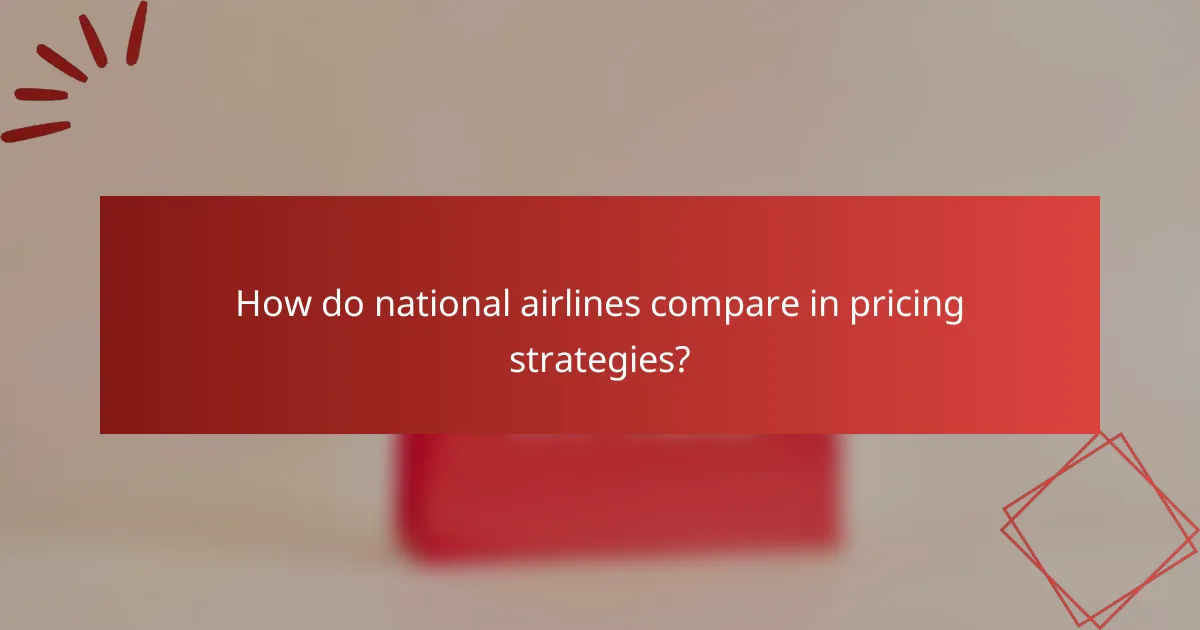
How do national airlines compare in pricing strategies?
National airlines employ various pricing strategies that can significantly affect ticket costs. Key factors include dynamic pricing models, market demand, and competition, which lead to substantial differences in how airlines set their fares.
Comparison of American Airlines and Delta Air Lines
American Airlines and Delta Air Lines utilize dynamic pricing models that adjust fares based on real-time demand and booking patterns. Both airlines often offer promotional fares during off-peak seasons to attract more travelers, but their pricing algorithms may differ, leading to variations in ticket prices for similar routes.
For instance, American Airlines may provide lower introductory fares to fill seats quickly, while Delta might focus on maintaining higher prices until closer to departure. Travelers should compare prices on both airlines regularly, especially during peak travel times, to find the best deals.
Pricing strategies of British Airways vs. Lufthansa
British Airways and Lufthansa have distinct pricing strategies influenced by their respective markets. British Airways often employs a tiered pricing model, allowing customers to choose from different fare classes with varying levels of service and flexibility. This approach can lead to a wide range of prices for similar flights.
Lufthansa, on the other hand, frequently uses a combination of dynamic pricing and advance purchase discounts. By offering lower fares for early bookings, Lufthansa encourages travelers to commit sooner, which can be advantageous for budget-conscious passengers. Comparing these strategies can help travelers maximize their savings when booking flights within Europe.
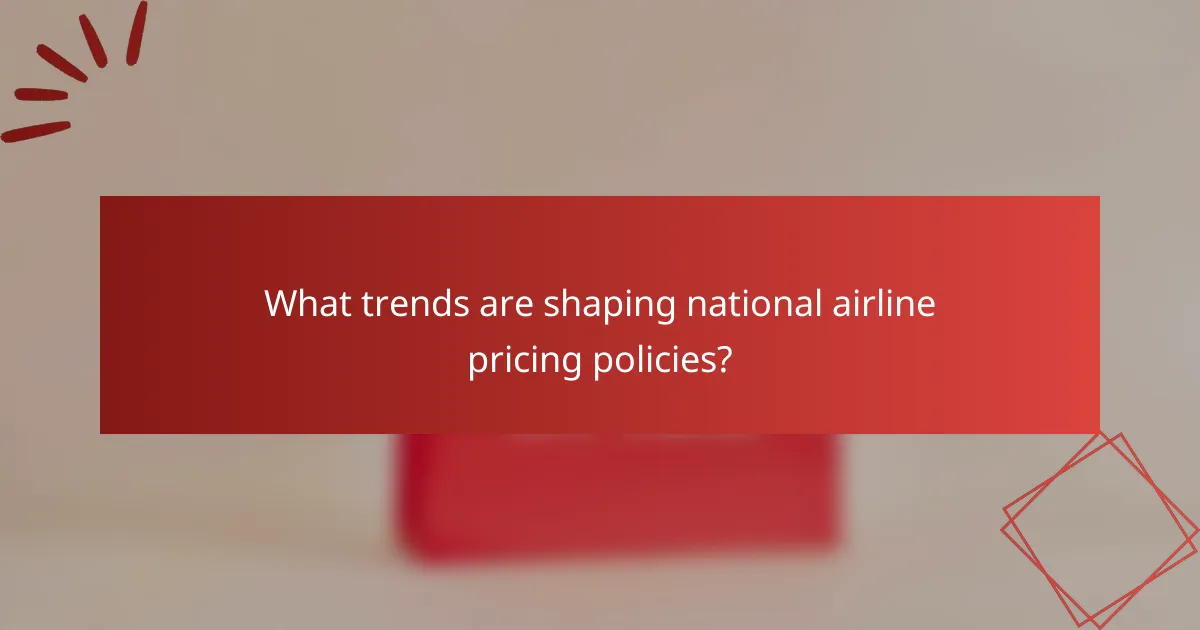
What trends are shaping national airline pricing policies?
National airline pricing policies are increasingly influenced by dynamic pricing models, technological advancements, and shifting consumer behaviors. These trends are reshaping how airlines set fares, manage inventory, and respond to market demands.
Impact of technology on pricing models
Technology plays a crucial role in the development of dynamic pricing models for airlines. Advanced algorithms analyze vast amounts of data, including historical pricing, competitor rates, and real-time demand, allowing airlines to adjust fares frequently and optimize revenue. For example, airlines may use machine learning to predict price elasticity and adjust their pricing strategies accordingly.
Moreover, the integration of artificial intelligence and big data analytics enables airlines to personalize offers based on customer preferences and booking patterns. This can lead to more competitive pricing and improved customer satisfaction, as travelers receive tailored options that meet their needs.
Consumer behavior trends
Consumer behavior is evolving, with travelers becoming more price-sensitive and informed. Many passengers now utilize comparison websites and apps to find the best deals, prompting airlines to adopt more competitive pricing strategies. Additionally, the rise of flexible travel options, such as last-minute deals or off-peak discounts, reflects changing consumer preferences for value.
Another trend is the increasing demand for transparency in pricing. Customers expect clear breakdowns of fares, including taxes and fees, which influences how airlines structure their pricing models. Airlines that provide straightforward pricing information are likely to build trust and loyalty among their customer base, ultimately affecting their pricing policies.
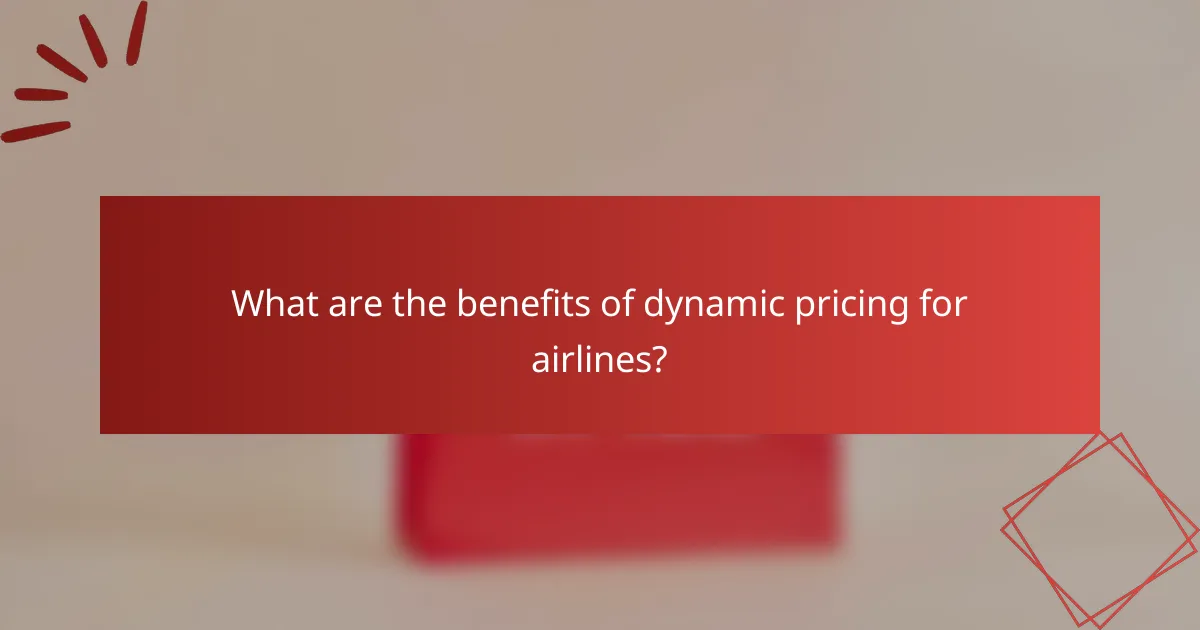
What are the benefits of dynamic pricing for airlines?
Dynamic pricing allows airlines to adjust ticket prices based on demand, competition, and other factors, leading to several key advantages. This pricing strategy can enhance profitability and optimize resource allocation, making it a crucial tool in the airline industry.
Increased revenue potential
Dynamic pricing can significantly boost an airline’s revenue by allowing it to charge higher prices during peak demand periods. For instance, during holiday seasons or major events, airlines can increase fares as more travelers seek flights.
By analyzing booking patterns and customer behavior, airlines can implement pricing models that maximize income. This approach often leads to a revenue increase of several percentage points compared to static pricing models.
Improved inventory management
Dynamic pricing enhances inventory management by enabling airlines to better match supply with demand. By adjusting prices in real-time, airlines can encourage bookings during low-demand periods and optimize seat occupancy.
For example, if a flight is underbooked, lowering prices can stimulate demand, while higher prices can be set for flights that are nearly full. This flexibility helps airlines maintain a balanced load factor, which is essential for operational efficiency.
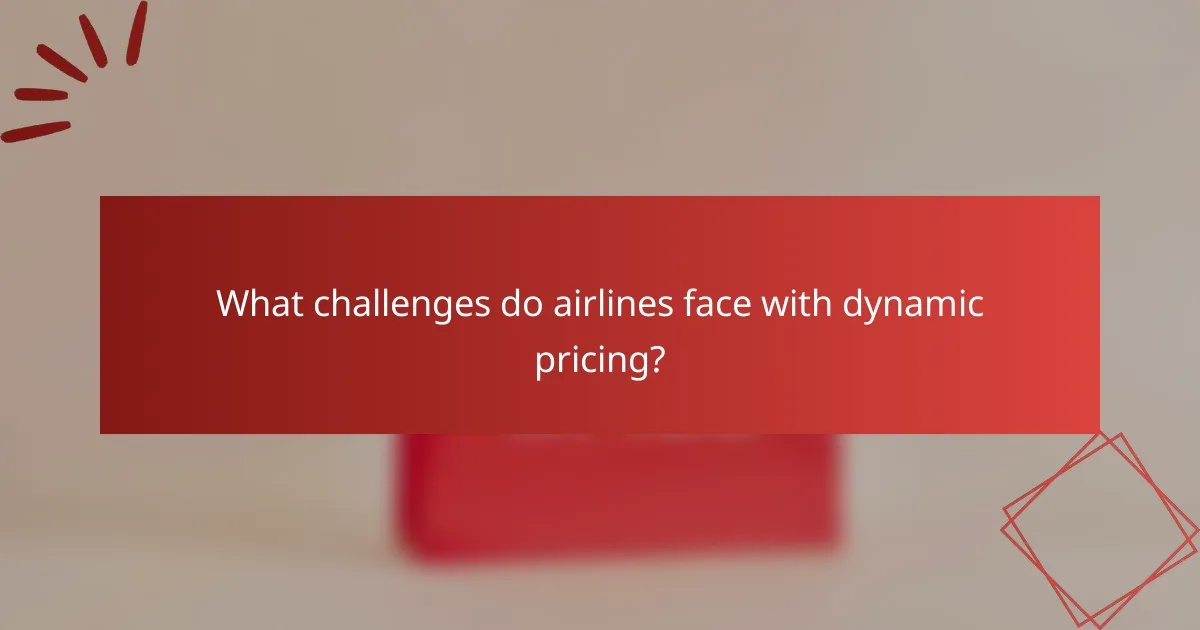
What challenges do airlines face with dynamic pricing?
Airlines encounter several challenges with dynamic pricing, primarily related to customer perception and regulatory compliance. These issues can significantly impact revenue management strategies and customer satisfaction.
Customer perception issues
Dynamic pricing can lead to customer dissatisfaction when travelers perceive prices as unfair or unpredictable. For instance, a passenger may feel frustrated if they see a lower fare shortly after booking their ticket, leading to concerns about transparency and trust in the airline’s pricing strategy.
To mitigate these perception issues, airlines should communicate clearly about how dynamic pricing works and the factors influencing fare changes. Providing explanations about demand fluctuations, seasonality, and booking timing can help customers understand the rationale behind pricing variations.
Regulatory compliance challenges
Airlines must navigate various regulatory frameworks that govern pricing practices in different regions. For example, in the European Union, regulations require airlines to display total prices, including all taxes and fees, which can complicate dynamic pricing models.
To ensure compliance, airlines should regularly review their pricing strategies against local regulations and adjust their systems accordingly. It’s crucial to stay informed about changes in laws that may affect pricing transparency and consumer rights, as non-compliance can lead to significant penalties and reputational damage.
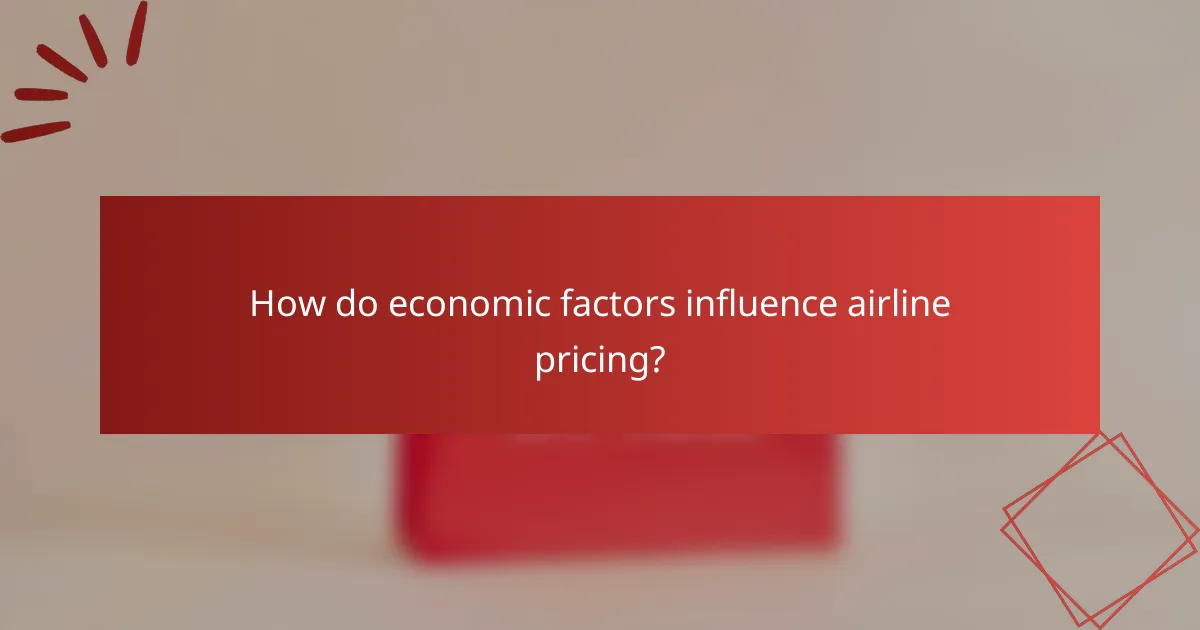
How do economic factors influence airline pricing?
Economic factors significantly impact airline pricing by affecting operational costs and consumer demand. Key elements such as fuel prices, labor costs, and market competition play crucial roles in determining ticket prices.
Fuel price fluctuations
Fuel price fluctuations are one of the most critical economic factors influencing airline pricing. When fuel prices rise, airlines often pass these costs onto consumers through higher ticket prices. Conversely, when fuel prices drop, airlines may reduce fares to attract more passengers.
Airlines typically monitor fuel prices closely and may adjust their pricing strategies accordingly. For example, a spike in crude oil prices can lead to fare increases of several percentage points, while a decrease might result in temporary fare reductions.
Travelers should be aware of fuel price trends when booking flights. Keeping an eye on global oil prices can provide insights into potential fare changes, allowing consumers to make more informed purchasing decisions.
